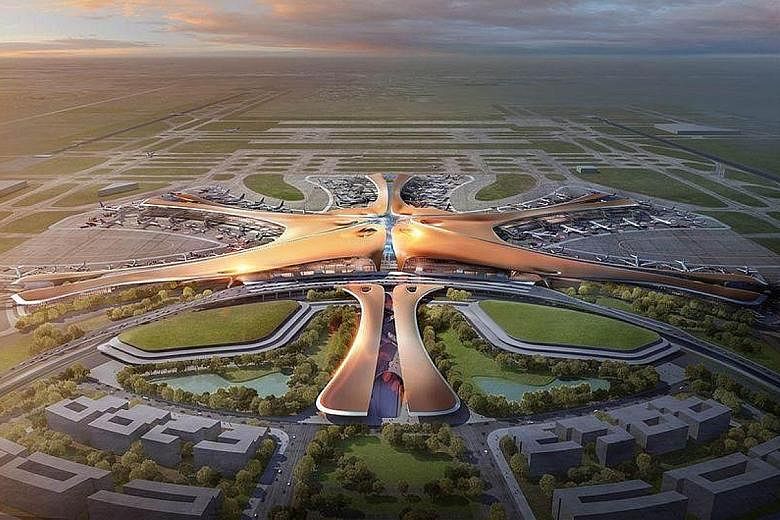BEIJING •Like ancient warlords, China's three biggest airlines have dominated their regional cities: Air China controlling Beijing, China Eastern Airlines holding sway in the financial centre of Shanghai, and China Southern Airlines ruling the roost down in export gateway Guangzhou. Until now.
Rising on a plain south of Beijing is a mega airport that is about to change the balance, bringing all three head to head in the capital as it becomes the world's biggest aviation hub.
The new airport, due to open in 2019, has been designated by the authorities as the hub for members of the SkyTeam alliance, a global group of airlines that includes China Eastern and China Southern. The two carriers will each be allowed to capture 40 per cent of the airport's passengers, gaining coveted time slots to Europe and the United States in Air China's backyard.
"This is an absolute game changer for China Eastern and China Southern," said Ms Corrine Png, chief executive officer of Crucial Perspective in Singapore. "Having all the SkyTeam alliance members under one roof will enable seamless flight connections."
The invasion of Air China's regional rivals has repercussions beyond China. As well as dominating their home bases, the big three Chinese players have each carved out a position abroad. Air China, through its Star Alliance ties with Deutsche Lufthansa and United Continental Holdings, commands many of the routes to Europe and North America. China Eastern is the biggest carrier to Japan and South Korea. And China Southern is strong in Australia and South-east Asia.
With access to more slots in Beijing, China Southern and China Eastern would potentially get more access to lucrative North American routes, while their SkyTeam partners would get better access to the Chinese capital. In addition, China Southern, the nation's biggest airline, would be able to draw traffic from its South-east Asian links to fly via Beijing to the US.
Until then, they have to fight for slots at the existing airport, which is close to capacity. Air China, part of the Star Alliance, whose 28 members include United, Singapore Airlines and Lufthansa, controls 38 per cent of the slots at Beijing Capital International Airport, which handled 94 million passengers last year - close to the maximum of 96 million. "There are demands to add hundreds of flights in Beijing every day that get refused because we're running out of resources," said Capital Airports Holding general manager Liu Xuesong. "The city is capable of running dual hubs."
The new US$12.9 billion (S$17.9 billion) airport in the suburb of Daxing, which was approved in 2014, would accommodate up to 100 million passengers a year with as many as seven runways. Mr Liu estimates that by 2025, the two Beijing airports would share 170 million passengers, including 25 million on international flights.
The new Beijing airport is not all bad news for Air China. Its airport is closer to downtown, about 25 minutes in smooth traffic to the main business district in the eastern part of the capital, or the same time by train. Planned road and rail links from the new airport would also whisk travellers into Beijing in about half an hour, but to the south- west, a part of the city that is less convenient for most business executives, especially during the capital's congested peak traffic times.
One major effect of all the expansion will be some very congested skies over China, which has some of the most constricted airspace in the world due to priority for military planes. Capa Centre for Aviation estimates that only about 20 per cent of the airspace over China is open to civilian flights - one of the reasons for Chinese airlines' spotty on-time performance record.
BLOOMBERG

